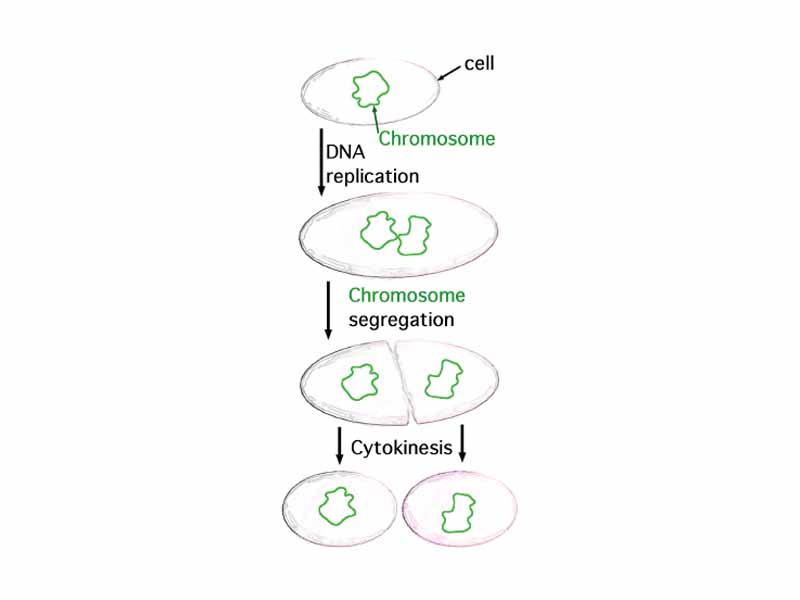Interdisciplinary Note (6 of 25)
Binary fission is a good context in which to reiterate some of the similarities and differences between cell division in prokaryotes and eukaryotes. Identities and differences are the raw materials of MCAT passages, and the prokaryote / eukaryote divide is a major operator on the exam.
Cell division in prokaryotes occurs via binary fission, while in eukaryotes, the process of cell division is mitosis (or meiosis in the case of gametogenesis in animals).
Binary fission in bacteria coincides with the process of DNA replication, while in eukaryotes DNA replication occurs during interphase, prior to mitosis. Although the basic mechanics of DNA replication are similar in prokaryotes and eukaryotes, DNA replication is much more complicated in eukaryotes. In bacteria, generally, DNA replication is bi-directional and begins at a single origin of replication on the circular nucleoid. DNA replication starts from an origin of replication. This opens up a replication bubble which separates the DNA double strand. Each circular DNA strand then attaches to the cell membrane, which as the cell elongates, become separated, ultimately divided by the septum that is formed between them.
